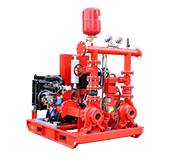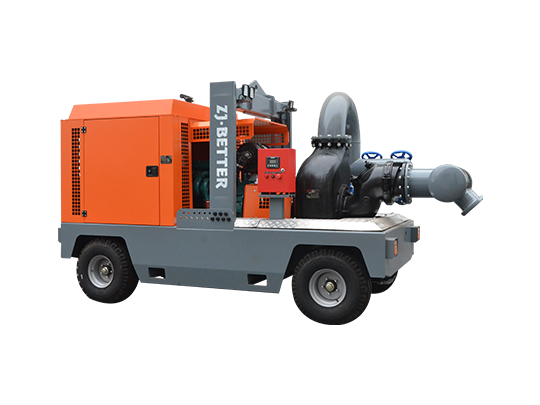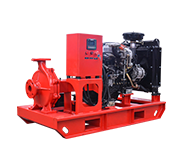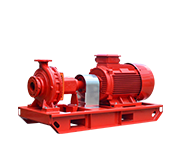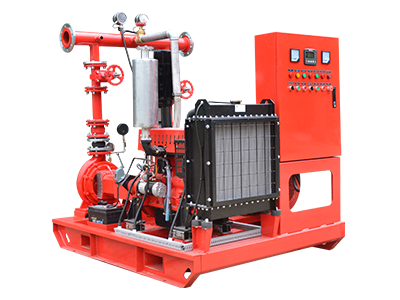- Fire Pump System
-
- UL-Listed Fire Pump SetEDJ End Suction Fire Pump SetEDJ Fire Pump SetEJ Small Flow Fire Pump SetFire Pump PackagesContainerized fire pump setDiesel Fire Pump SetED Small fire pump setElectric Jockey Fire Pump SetFire Pump Set with Jockey PumpFire Pump SystemSplit Case Fire Pump SetMutistage EDJ Fire Pump SetDiesel Fire Pump Set with Jockey PumpFire Fighting Pump SystemElectric Diesel Jockey Fire Pump SetFire Fighting Pump Set with Jockey PumpSmall Capacity Electric Fire Pump SetDJ Fire Pump Set with Jockey PumpEJ Fire Pump SetED Fire Pump Set (Electric+Diesel pump)Diesel Engine Fire Pump SetDiesel Fire Jockey PumpSmall Fire Pump SetEDJ Fire Pump SystemFire Water Pump SetFire Pump AssemblyDJ Small Flow Fire Pump SetCummins Engine Fire Pump Set
- Mobile Pump Unit
-
- Split Case Series Mobile Pump TruckSelf Priming Series Mobile Pump TruckCentrifugal diesel driven dewatering pumps open frame trailerFlow-mixing Mobile Pump TruckFlow-mixing Mobile Pump TruckManure Pump TruckP12 modle mobile Pump truckP10 Modle Mobile Pump Truck1000m³Self Priming Series Mobile Pump TruckLarge Flow Non-Clogging Mobile Fire Pump TrailerTrailer Mounted Fire PumpFire Emergency Mobile Pump TruckDiesel Engine Emergency Mobile Trailer Pump
- Diesel Fire Pump
-
- UL Listed Diesel End Suction Fire PumpXBC-S Diesel Split Case Fire PumpXBC-IS Diesel End Suction Fire PumpXBC-D Diesel Multistage Fire PumpVertical Turbine Diesel Engine Fire PumpDiesel Engine Single-Stage Centrifugal PumpXBC-IS Diesel End Suction Fire Fighting PumpXBC-S Diesel Engine Split Case Fire PumpDiesel Engine End Suction Fire PumpXBC-IS Diesel End Suction Fire PumpsZWC Diesel Engine Self Priming Pump for IrrigationDiesel Engine End Suction Fire Fighting PumpXBC-S Heat Exchange Diesel End Suction Fire PumpXBC-XA Diesel Engine End Suction Fire PumpXBC-IS Diesel Engine Fire PumpDiesel Engine End Suction Fire PumpXBC-IS Diesel Engine End Suction Fire PumpXBC-ISO Diesel Fire Fighting PumpPortable Fire PumpFire Booster Pump

Email: zjbetter@119pump.com
Tel:+86 15336708022(Gloria) +86 13306708055 (Ivy) +86 13357006058 (Serena) +86 13357022877 (Wendy) +86 17757009882(Kate)
Fax:0086-570-3010238
-
What are the best practices for testing fire pumps to ensure optimal performance?
Best practices include: Annual Flow Test: Conduct an annual flow test at 100%, 150%, and churn conditions to ensure the pump meets performance criteria. Weekly Inspection: Perform weekly inspections to check for leaks, pressure levels, and proper operation of the controller. Monthly Testing: Run the pump monthly to ensure it starts and operates correctly, verifying parameters such as pressure and flow rate. Record Keeping: Maintain detailed records of all tests, inspections, and maintenance activities.
View more +
-
What advancements are being made in fire pump control and monitoring technology, and how do they enhance system performance?
Advancements in fire pump control and monitoring technology are driving improvements in system performance, reliability, and efficiency: Digital Control Systems: Modern fire pump controllers feature advanced digital control systems with intuitive interfaces, customizable settings, and integrated diagnostic capabilities, allowing for precise control and monitoring of pump operation. Remote Monitoring and Telemetry: Integration of remote monitoring and telemetry systems enables real-time monitoring of fire pump performance and status from anywhere with internet connectivity, facilitating proactive maintenance, troubleshooting, and rapid response to potential issues. Predictive Analytics: Implementation of predictive analytics algorithms and machine learning techniques enables early detect
View more +
-
How can water hammer be mitigated in fire pump systems, and what are its potential consequences?
Water hammer, a hydraulic shock wave caused by the sudden interruption or change in flow of water within a piping system, can pose serious risks to fire pump systems if not properly addressed. Potential consequences of water hammer include damage to pipes, fittings, valves, and other system components, as well as increased stress on the fire pump and associated equipment. To mitigate water hammer, various measures can be implemented, including the installation of surge suppressors, air chambers, or hydraulic accumulators to absorb excess pressure fluctuations and dissipate energy. Additionally, proper design of the piping layout, valve configurations, and system operating procedures can help minimize the occurrence of water hammer and ensure the safe and reliable operation of the fire pump
View more +
-
How can fire pump systems be adapted for use in green buildings?
Adapting fire pump systems for green buildings involves: Energy Efficiency: Using energy-efficient pumps and VFDs to minimize power consumption. Water Recycling: Implementing systems to recycle test water or use greywater where appropriate. Renewable Energy: Integrating renewable energy sources, such as solar or wind, to power the pump system. Sustainable Materials: Using environmentally friendly materials and ensuring the system is designed for minimal environmental impact.
View more +
-
What are the factors influencing the lifecycle costs of fire pump systems?
Factors influencing lifecycle costs include: Initial Installation Costs: The cost of purchasing and installing the pump, including labor and materials. Maintenance and Repair Costs: Ongoing costs for routine maintenance, repairs, and part replacements. Operational Costs: Energy consumption and operational costs over the pump’s lifetime. Compliance and Testing Costs: Costs associated with ensuring regulatory compliance and performing regular testing. Upgrade and Replacement Costs: Future costs for system upgrades or replacing obsolete or worn-out components.
View more +
-
What role do pressure-reducing valves play in fire pump systems, and how are they applied?
Pressure-reducing valves (PRVs) are essential components in fire pump systems, particularly in high-rise buildings or situations where the pressure needs to be regulated. These valves reduce the pressure of the water supplied by the fire pump to a manageable level suitable for the fire protection system's components, such as sprinklers, standpipes, or hoses. PRVs ensure that the pressure does not exceed the design limits of the system, preventing damage to equipment and minimizing the risk of water wastage or leakage. Proper application of PRVs involves considering factors such as the desired outlet pressure, flow rate, and system layout to select the appropriate valve type and size.
View more +
-
What are the considerations for integrating fire pumps with water storage tanks?
Integrating fire pumps with water storage tanks involves several considerations: Tank Capacity: Ensure the tank capacity is sufficient to meet the demands of the fire protection system, considering factors such as flow rate, duration of operation, and local regulations. Pump Activation: Implement controls that automatically activate the fire pump when the water level in the tank drops below a certain threshold, ensuring continuous water supply during emergencies. Water Quality: Maintain water quality in the storage tank to prevent contamination and ensure the water remains suitable for fire suppression. Tank Location: Position the tank strategically to minimize friction losses in the piping system and optimize water distribution to fire sprinklers or hydrants.
View more +
-
How do you manage noise levels from fire pump operations?
Managing noise levels involves: Acoustic Enclosures: Installing acoustic enclosures around the pump. Vibration Isolation: Using vibration isolation mounts to reduce noise transmission. Soundproofing: Adding soundproofing materials to the pump room.
View more +
-
What are the key differences between fire pump testing for acceptance and maintenance purposes?
Acceptance Testing: Initial Test: Conducted when the pump is first installed to verify it meets design specifications. Comprehensive: Includes flow tests, pressure tests, and system integration checks. Maintenance Testing: Regular Basis: Conducted periodically to ensure the pump continues to meet performance standards. Focused: Often involves specific tests like the churn test and flow tests at rated conditions.
View more +
-
What are the benefits of using a diesel fire pump over an electric one?
Diesel fire pumps offer several benefits: Independence from Electrical Power: Useful in areas with unreliable power supply or during power outages. High Reliability: Diesel engines are robust and can provide consistent power. Emergency Readiness: Ensures the fire pump can operate independently of external power sources.
View more +
-
How do you perform a weekly inspection of a fire pump?
Weekly inspection steps include: Visual Inspection: Check for leaks, corrosion, and physical damage. Controller Check: Ensure the controller is in the automatic position and all indicators are normal. Engine Inspection (Diesel): Check oil levels, battery charge, and fuel levels. Operational Test: Briefly start the pump to ensure it runs smoothly and quietly.
View more +
-
How can I maximize the efficiency of a mobile pump truck?
To maximize efficiency, ensure the truck is well-maintained, use the right type of pump for the job, train operators thoroughly, and plan the pumping process to minimize downtime and material wastage.
View more +
-
What factors affect the performance of a mobile pump truck?
Performance can be influenced by the type of pump, the quality of the material being pumped, environmental conditions, the skill of the operator, and the condition of the equipment.
View more +
-
How do you operate a mobile pump truck?
Operating a mobile pump truck requires training and certification. Operators must understand the controls, safety procedures, and how to manage the pump’s output and direction.
View more +
-
What should I do if the pump truck fails to operate properly?
First, refer to the operator’s manual for troubleshooting steps. Common issues might involve blockages, mechanical failures, or power supply problems. If the issue persists, contact a professional service technician.
View more +
-
What should be included in a fire pump maintenance log?
A fire pump maintenance log should include: Date and Time of Inspections/Tests: Detailed records of when each inspection and test was performed. Technician Name: The name of the person performing the inspection or maintenance. Observations: Notes on the condition of the pump, any issues found, and actions taken. Test Results: Data from performance tests, including flow rates and pressures. Maintenance Actions: Details of any repairs, adjustments, or parts replaced.
View more +
-
What are the considerations for selecting the location of a fire pump room?
Location considerations include: Accessibility: Easy access for maintenance and testing. Proximity to Water Source: Close to the water supply to minimize suction line length and pressure losses. Environmental Protection: Protection from flooding, extreme temperatures, and other environmental hazards. Ventilation: Adequate ventilation to prevent overheating, especially for diesel engines.
View more +
-
How do I select the right electric fire pump for my building?
Consult with a fire protection engineer or specialist to evaluate your building’s specific needs, ensuring the selected pump meets all regulatory and operational requirements.
View more +
-
Can an electric fire pump be used for purposes other than firefighting?
While primarily designed for firefighting, some facilities may use electric fire pumps for other high-pressure water needs, but this should be done in accordance with local regulations and without compromising fire safety.
View more +
-
How can fire pumps be tested in compliance with NFPA standards?
Fire pumps can be tested in compliance with NFPA standards by performing the following tests: Weekly Inspections: Conduct visual inspections to check for leaks, unusual noises, and proper operation. Monthly Testing: Run the pump under no-flow conditions (churn test) to ensure it starts and runs correctly. Annual Performance Test: Perform a flow test to measure the pump’s flow rate and pressure at various points (100%, 150% of rated capacity) to verify it meets design specifications. Controller Tests: Check the fire pump controller for correct operation, including automatic start and stop functions.
View more +
-
What are the fire pump performance curves, and how are they used?
Fire pump performance curves are graphical representations that show the relationship between the pump's flow rate and its discharge pressure. These curves help in selecting the right pump for a specific application by providing crucial data on how the pump performs under various conditions. Key points on the curve include: Shutoff (Churn) Point: The point at which the pump operates with no flow, indicating maximum pressure. Rated Point: The point at which the pump delivers its rated flow and pressure. End of Curve: The maximum flow the pump can handle while maintaining acceptable pressure.
View more +
-
What are the key considerations for fire pump suction piping?
The design and installation of fire pump suction piping are critical for optimal pump performance. Key considerations include: Sufficient diameter: The suction piping should be adequately sized to minimize friction losses and ensure a steady flow of water. Straight run: The suction piping should have a straight run into the pump to avoid turbulence and cavitation. Proper support: The piping should be properly supported to prevent vibrations and mechanical stress on the pump. Strainers: Installing strainers can help prevent debris from entering the pump and causing damage.
View more +
-
How does climate impact fire pump operation and maintenance?
Climate can significantly impact fire pump operation and maintenance. In cold climates, measures must be taken to prevent freezing of water in the pump and pipes, such as installing heaters and insulation. In hot and humid climates, protecting the pump from excessive heat and corrosion is crucial. Regular maintenance schedules may need adjustments based on the local climate to ensure optimal pump performance and longevity.
View more +
-
What should I do if the electric fire pump does not start?
Steps to troubleshoot include: Check Power Supply: Ensure the pump is receiving power and the control panel is functioning correctly. Inspect Electrical Connections: Verify that all connections are secure and breakers are not tripped. Review Control Panel Alarms: Look for any error messages or alarms indicating specific issues. Examine Water Supply: Ensure that the water source is adequate and there are no obstructions. Professional Assistance: If the issue persists, contact a certified technician to diagnose and repair the problem.
View more +
-
How can I test my electric fire pump to ensure it is working correctly?
Testing procedures include: Weekly Churn Test: Run the pump without discharging water to ensure it starts and operates correctly. Monthly Operational Test: Run the pump to verify it reaches the required pressure and flow, without engaging the full system. Annual Full-Flow Test: Conduct a comprehensive test under actual flow conditions to measure the pump’s performance against its design specifications.
View more +

